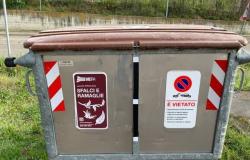Article taken from the June 2024 issue of Forbes Italia. Subscribe!
Diversify energy supplies and reduce dependence on fossil fuels. This is the objective that the European Union has set itself by promoting the production of renewable energy, which in 2021 represented 21.8% of gross final consumption in EU countries.
In 2023, the bar for renewables for 2030 was raised, bringing it to 42.5% and aiming to reach 45%. “For some time now, at a European level, policies have been adopted that move towards the use of renewables,” he says Carlo Gioffrècoordinator of the energy public law department of the international tax, legal and financial consultancy firm Andersen.
The situation in Italy
“The commitments made in the recent G7 also go in this direction, with Italy having committed to tripling its production of clean energy between now and 2030. A sign of something that is changing. We are on the right track. The fact that the objectives were set by the EU is essential, because in this way it is difficult for individual states to choose another path, perhaps to avoid the impact that decarbonisation is destined to have on economic policies. Of course, once the objectives have been set, the methods for achieving them are left to the individual countries, also choosing between the forms of production based on the different characteristics of the territories. In Italy the first source is by far solar with photovoltaic use, so much so that, out of 5,677 megawatts of new installations in 2023, 92% refers to this type of system, while the percentage linked to wind or geothermal is significantly lower”.
In short, a strong development trend, despite some difficulties. “Italy must take into account historical and cultural situations that determine the need for special protections for the territory, and this can collide with the need for development in the energy field. Unfortunately we are subject to a certain complexity in the authorization processes for the plants, also because each procedure involves a plurality of subjects, ranging from local authorities to superintendencies and associations. This involves an extension of time such that sometimes, in the meantime, there is a need to modify the initial project, which must therefore be updated, with an increase in costs. If there was clarity in the times, investments would also be more attractive. Let’s not forget that the Pnrr provides, in measure 2, specific investment components in renewables, which must translate into concrete projects within the expected timescales, with the risk, otherwise, of losing the funds. This does not mean that nothing has been done, on the contrary: it is worth noting a notable organizational effort on the part of the institutions, as shown by the data, according to which, compared to 2022, 87% more renewables were achieved last year. But there is still more to do.”
The difficulties of local institutions
An effort that also translated into an improvement in relations between public and privatefor the benefit of development. “The most far-sighted public administrations – primarily with the instrument of public-private partnership – are encouraged to participate in energy transition instruments, and we realize that, without the intervention of private capital, the projects cannot be realized. The problem comes when you want to create plants intended to have an impact on individual territories. The demonstration is that here there are very few large plants and most of the production comes from small ones, also due to the particular conformation of the territory”.
An example of this difficulty of local institutions is that of Sardinia. “The bill passed by the Sardinia Region provides for an 18-month moratorium for the construction of plants throughout the territory, which also applies to those authorized and not yet built. Similar laws have already been struck down by the Constitutional Court, so I believe that the aim here is to push the legislator to adopt instruments that clarify the areas in which the plants can or cannot be built. In the meantime, however, time passes and this discourages potential investors. In fact, there have already been interventions aimed at simplification, but we need a decree that clarifies this and, perhaps, a code like that of public procurement that regulates the matter, helping investors”.
The development of agriphotovoltaics
A development that now seems to have come to a halt, at least on the political front, following the Agriculture Decree. “It seems to us, frankly, a step backwards. In the text approved by the Council of Ministers, it is no longer permitted to build ground-mounted photovoltaic systems on productive land. Areas where it is possible to do this have been identified, but these are insignificant surfaces compared to the needs. Fortunately, some types of plants are funded by the PNRR and it has been made clear that these will not be affected, as will those available to renewable energy communities. A sector excluded from this stop, then, is that of agri-solar and agri-photovoltaics, which appears destined for strong development in the coming years, also considering that 4 billion euros are available from Europe. Agriphotovoltaics allows you to generate clean energy without consuming agricultural land and is registering good interest from investors, as the numbers confirm, also taking into account the incentive system and the fact that small plants have faster authorization procedures, element that can be attractive. That said, news came out that the Quirinale had raised some doubts about the Energy Decree in the text approved by the Council of Ministers. We therefore hope that there is still room for rethinking, or at least for a greater balance in favor of renewables”.
© ALL RIGHTS RESERVED
For other content, subscribe to the Forbes.it newsletter by CLICKING HERE .
Forbes.it is also on WhatsApp: you can subscribe to the channel by CLICKING HERE .



